How Ancient Volcanoes Created Armenia’s Pink City
In the capital city of Yerevan, volcanic rock flows pink
As you approach the Armenian capital of Yerevan, you can look up and see Mount Ararat towering in the distance, casting its shadow on a city shrouded in pink. Yerevan has come to be known as Armenia’s Pink City for exactly this view: its Soviet-era buildings constructed out of pink stones from the surrounding landscape. The color is brightest at sunrise and sunset, and changes throughout the day based on where the sun hits it.
Yerevan itself its one of the oldest inhabited cities in the world, though it’s been known by many other names over the years. It was founded in 782 B.C.E. by Urartian King Argishti I, who named it Erebuni, though the territory had been settled and was actually in use since the 4th millennium B.C.E.. After World War I, Yerevan became the 12th capital of Armenia.
In November 1920, the Soviet regime made it's way to Armenia. Yerevan then became the capital of the Armenian Soviet Socialist Republic, one of 15 member states of the Soviet Union. Under Soviet leadership, the city was transformed from a small town to a modern metropolis of more than one million people. Russian-born Armenian architect Alexander Tamanian rebuilt the city in a circular layout, destroying many of the old buildings and replacing them with contemporary Soviet-style buildings made from the same local pink stone. The stone was abundant in the region and created a uniform and symmetric appearance that differed in shade from the grays seen in most Soviet cities. Ultimately the Soviet Union fell in 1991, at which point Yerevan took its place as capital of the Independent Republic of Armenia—its pink buildings intact.
Yerevan’s unique building stone is actually lava rock, though not the typical black hue found in far-flung destinations like Iceland and Hawaii; rather, this lava rock bears various shades of pink, ranging from light pastels to bright with a hint of orange. Scientifically, it’s known as tuff, a rock made of compacted volcanic ash that was ejected from a vent during an eruption. Though a similar rock type can be found in pockets in Turkey and parts of the U.S. southwest, pink tuff is rare outside of the region and Yerevan is the only major city built out of this stone.
Jack Lockwood, a volcanology consultant and author who was an exchange scientist in the USSR, said the difference in color is due to both the speed of the lava flow, where it ends up, and the oxidation. “Pink rock is oxidized ignimbrite, or welded tuff, from the upper portion of thick pyroclastic flows widely present in this part of Armenia,” he told Smithsonian.com.
That means the original flow from the volcano was dense and destructive, an explosion of hot ash, gases, and lava fragments that poured downslope very quickly. “Pink is the original oxidation color, formed as the pyroclastic flows cooled. But it's not the quick emplacement that counts [for the color]. It's the building up into a thick deposit on flat terrain, sometimes far from volcanic source.”
By contrast, Lockwood said the black lava rocks found throughout the world are basalt, or hard crystalline volcanic lava, resulting from a slow flow and a mixture of plagioclase and pyroxene minerals.
Despite its widespread use throughout Yerevan, Lockwood points out that the welded tuff is not very strong by nature, and it cannot support immense structural loads. So instead, basalt was commonly used on the lower floors, and the pink tuff—which has an even texture and can be easily cut into blocks and carved—was relegated to the upper two or three floors.
In recent years, new construction materials have begun to vary, breaking up the uniform pink tones, but stroll through the Republic Square at sunset to bath in the city's unique rosy glow.
Planning Your Next Trip?
Explore great travel deals
Smithsonian magazine participates in affiliate link advertising programs. If you purchase an item through these links, we receive a commission.
/https://tf-cmsv2-smithsonianmag-media.s3.amazonaws.com/accounts/headshot/JenniferBillock.png)
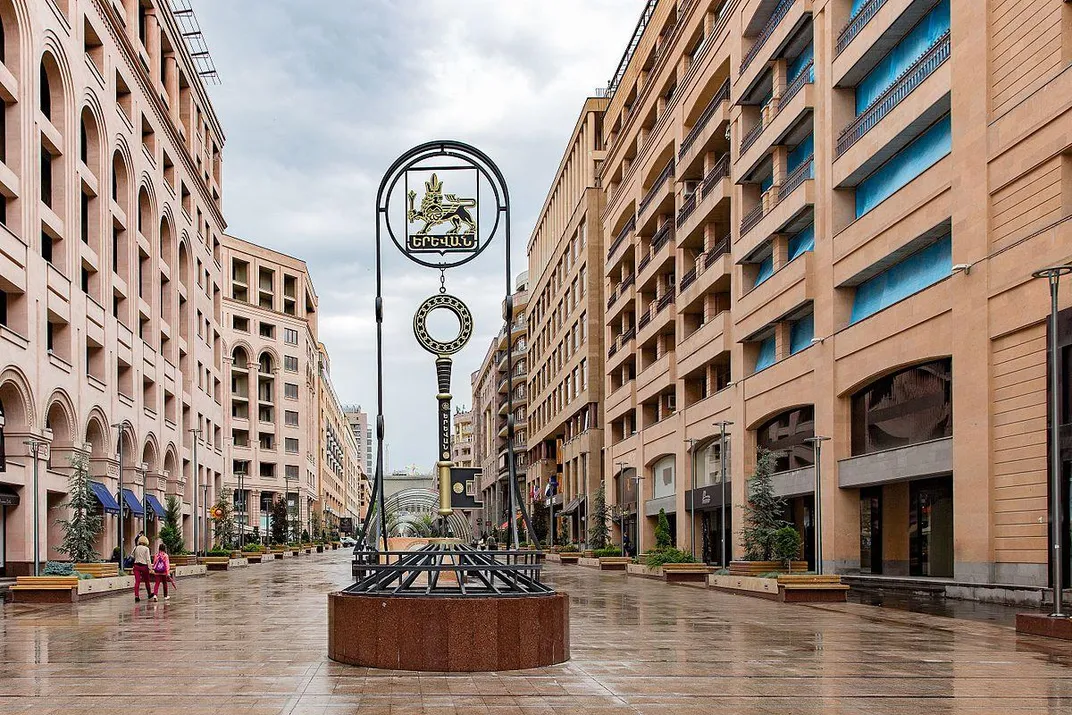
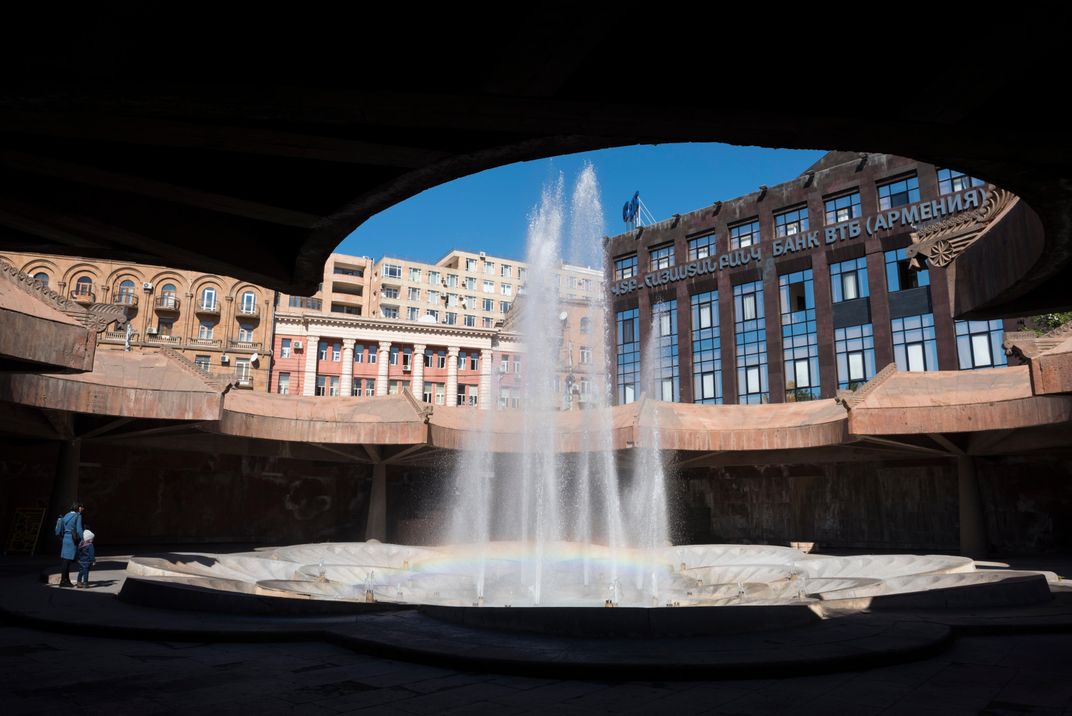
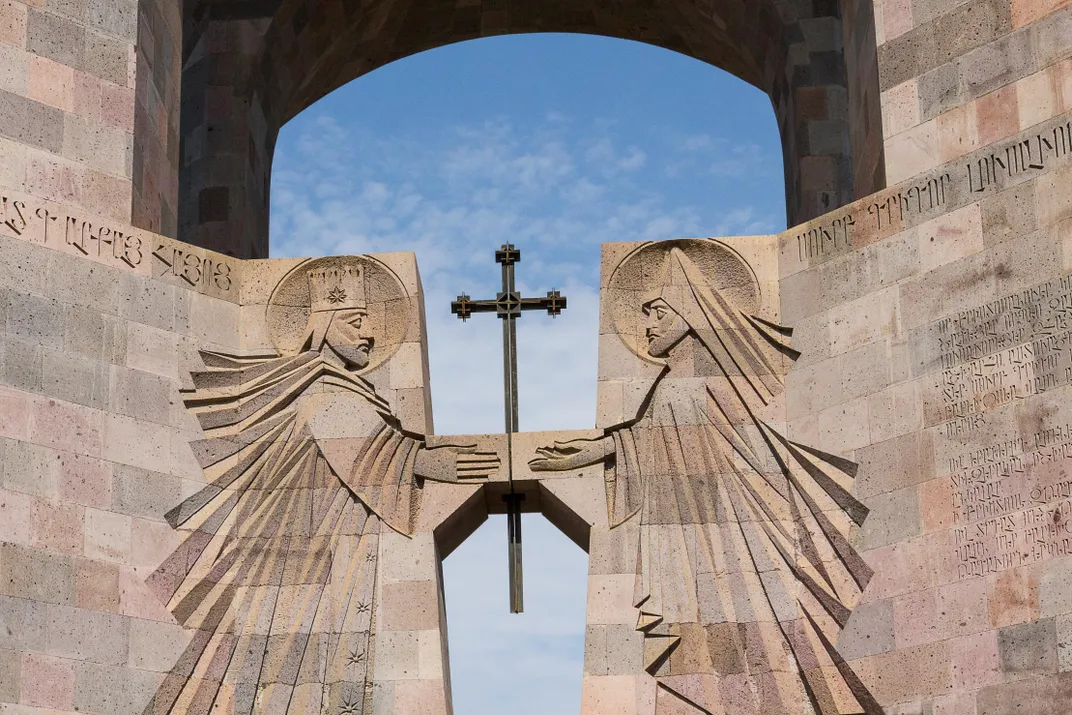
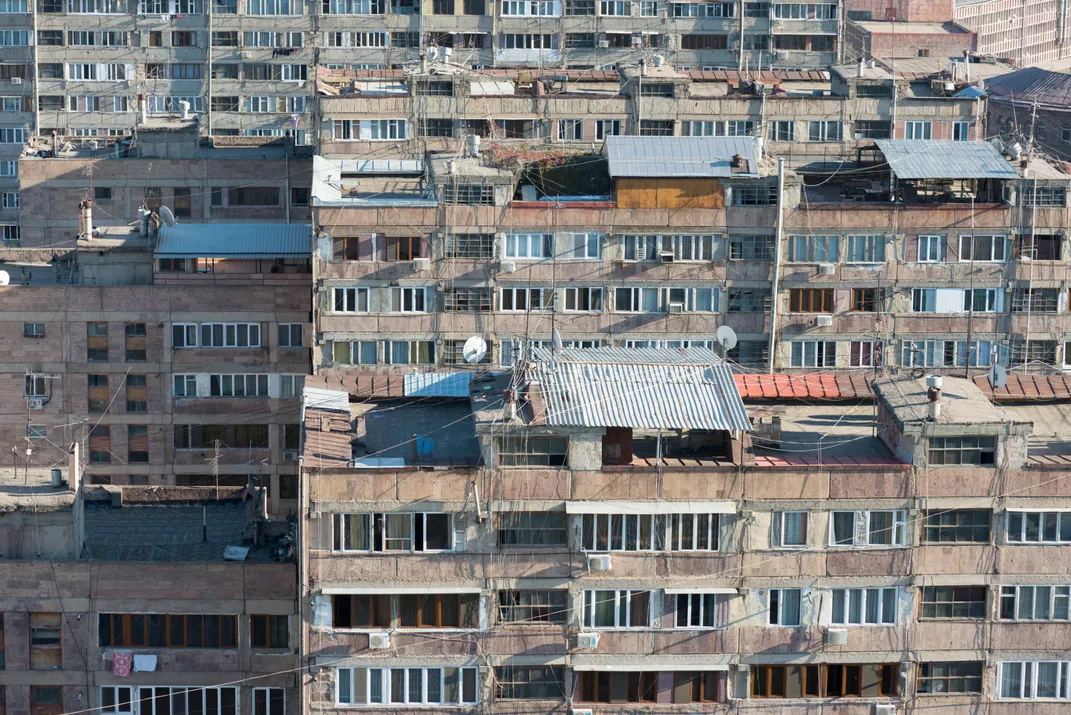
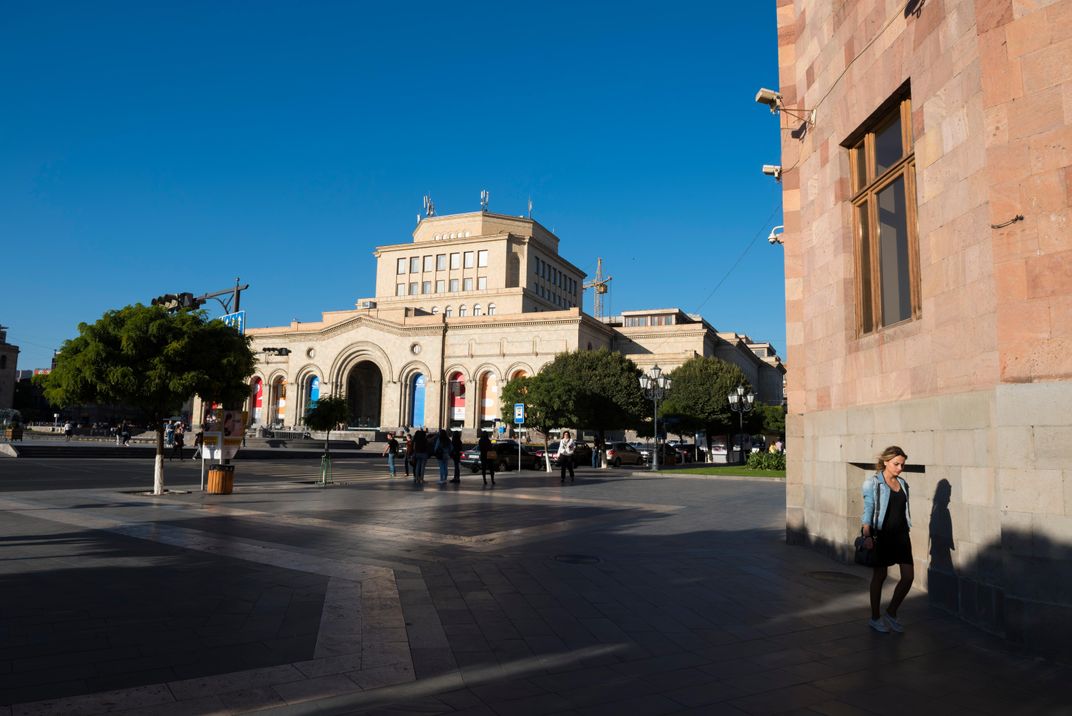
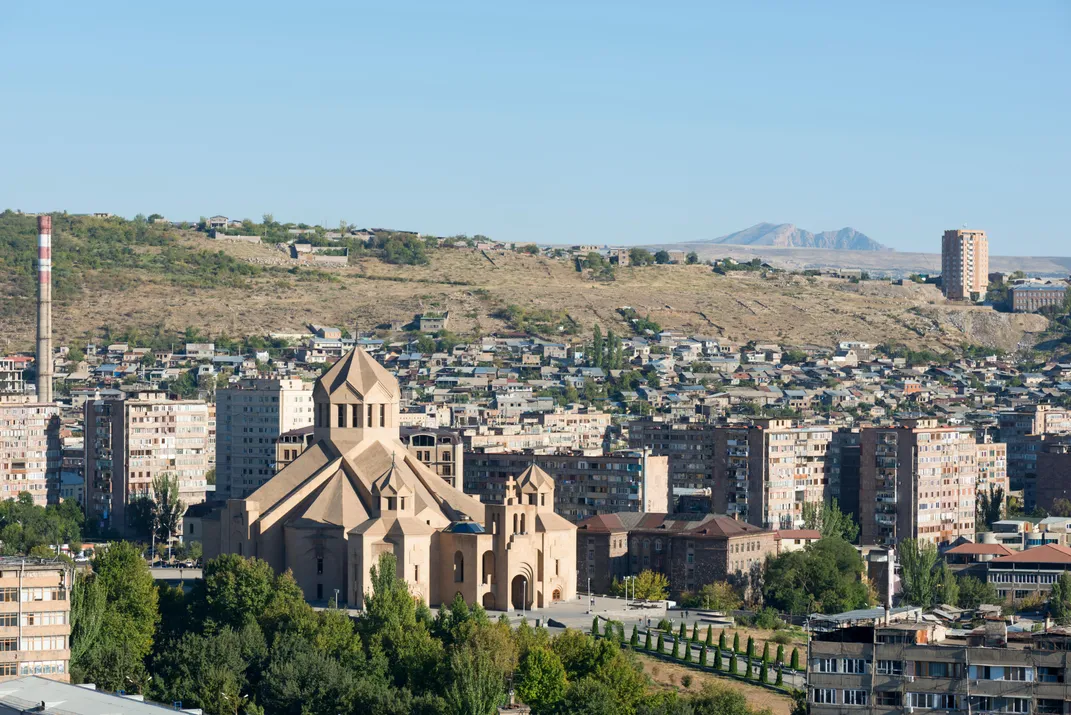
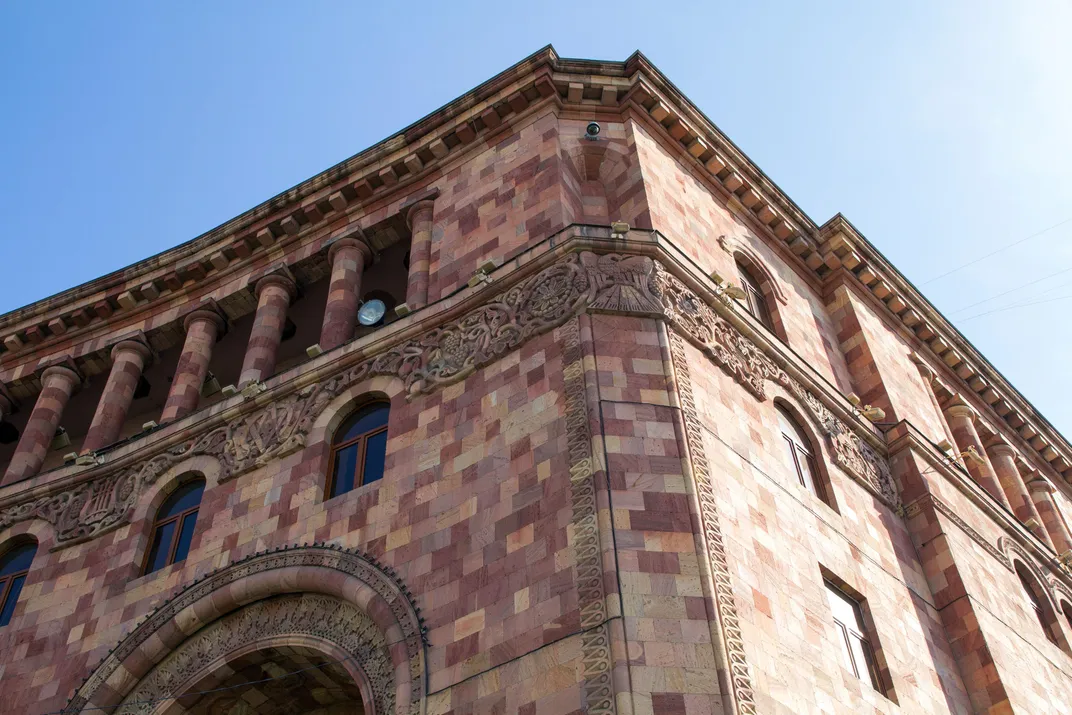
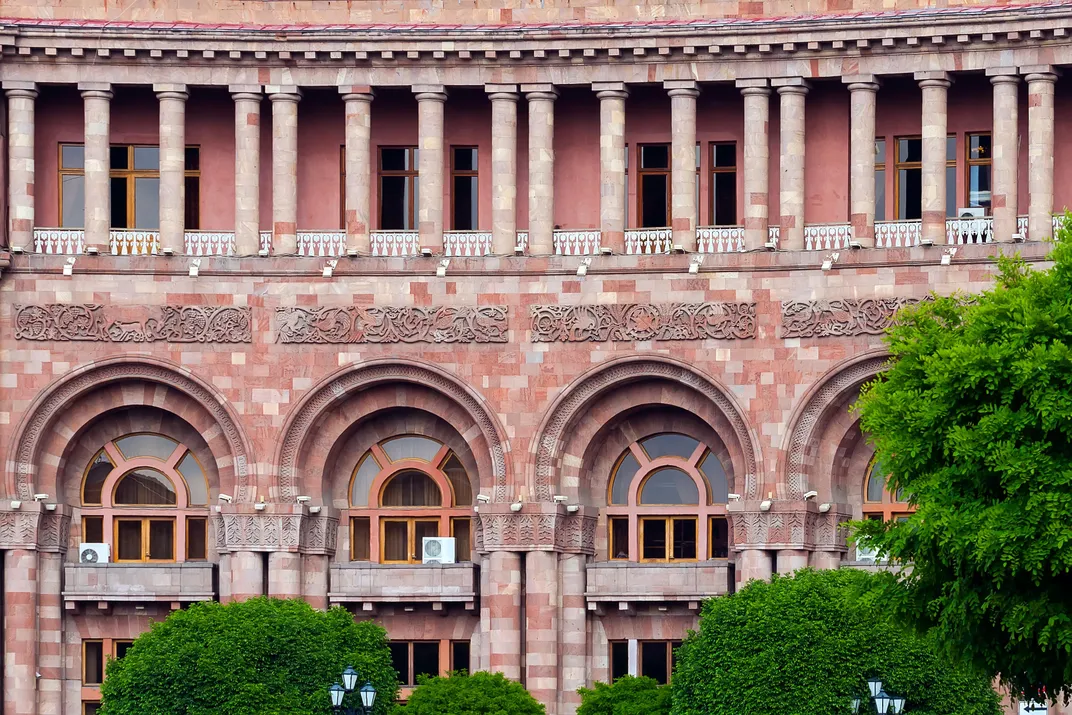
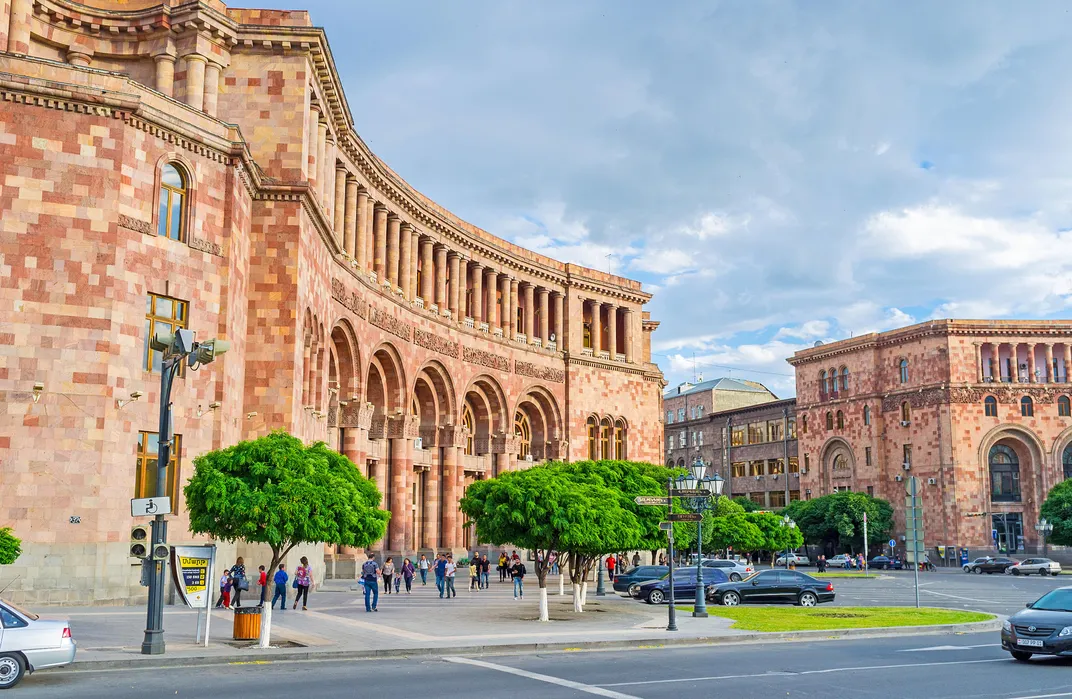
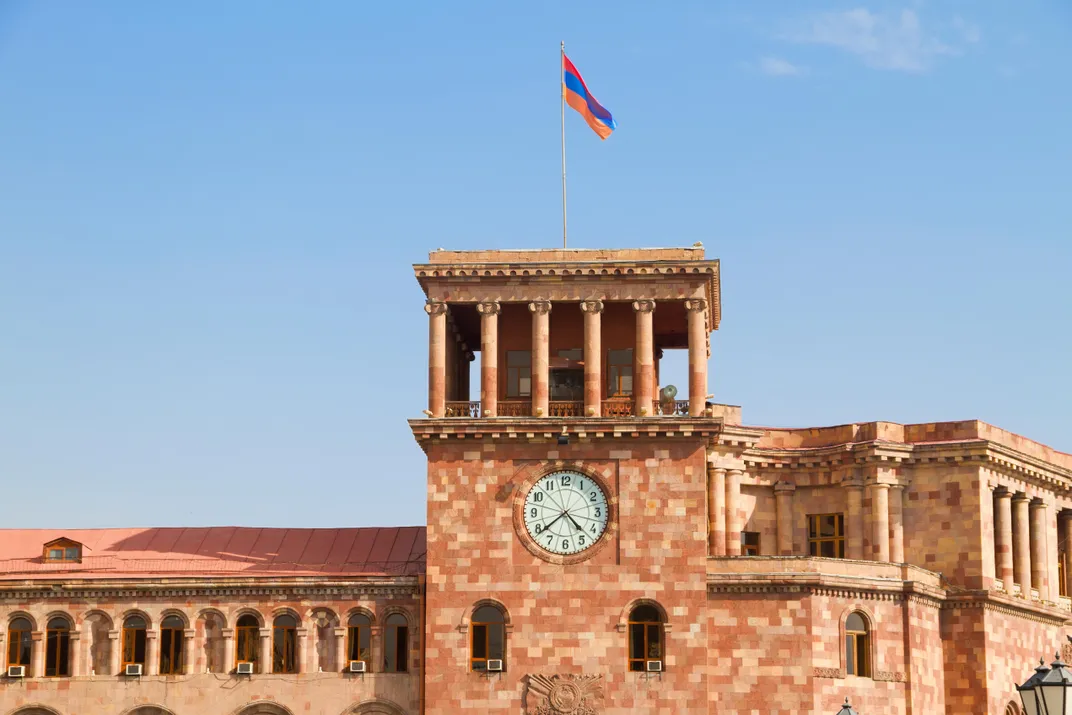
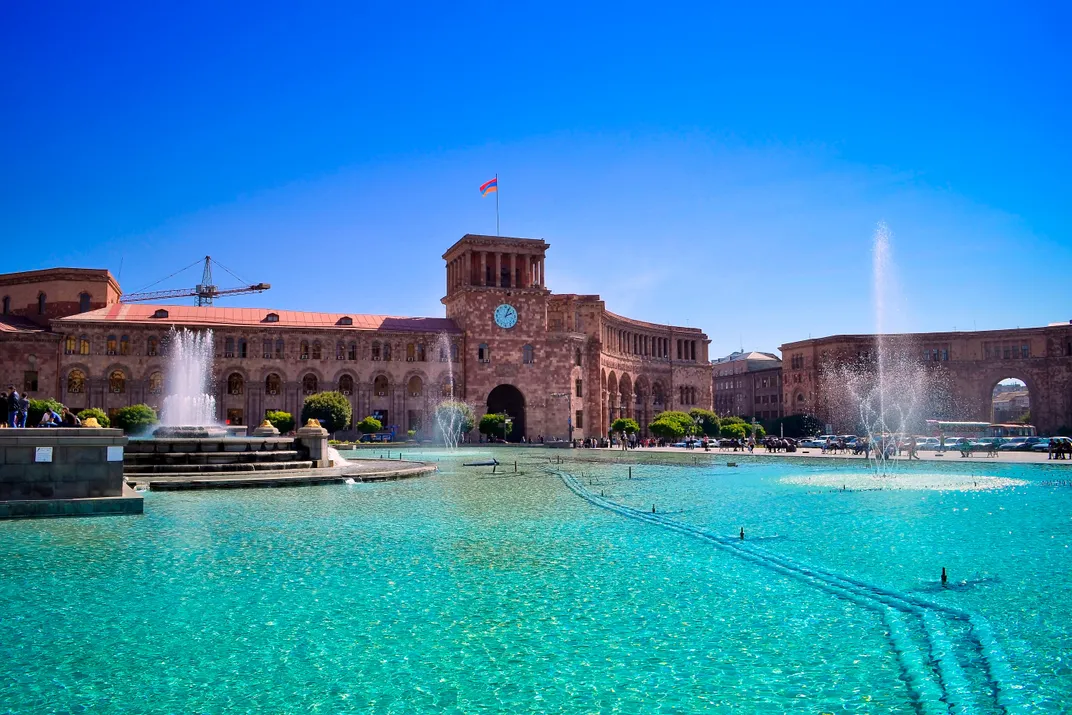
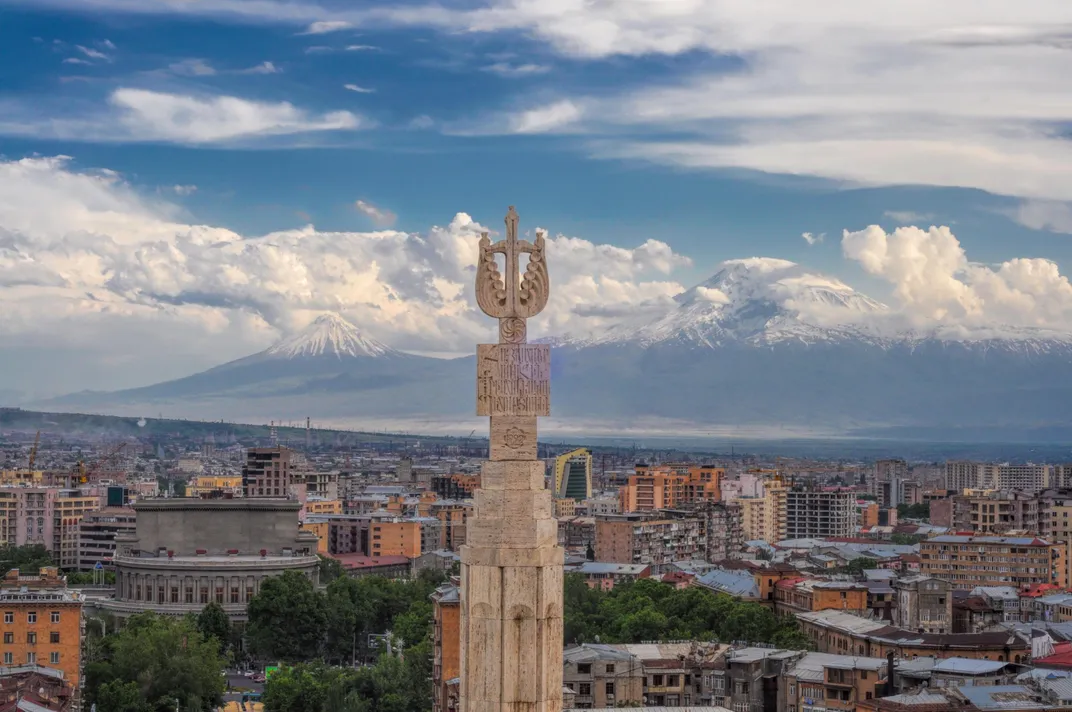
/https://tf-cmsv2-smithsonianmag-media.s3.amazonaws.com/accounts/headshot/JenniferBillock.png)